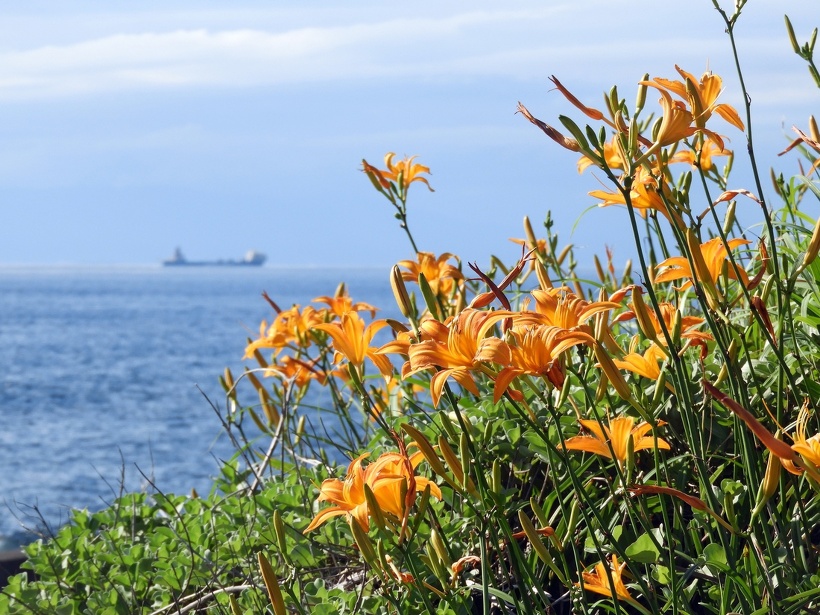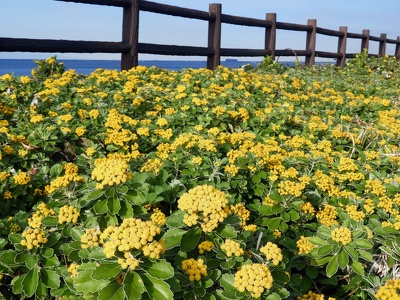Coastal Plant Community
| Area | Senzu Kakihara Beach Toshiki Coast Sunset Palm Line |
|---|

Exposed to sea breezes and strong winds in the shallow soil environment of the coastline, the coastal plant community is unique to the coastline created by the active volcanic activity of Izu Oshima.
Near the coast, the Oshima-hainezu (Juniperus conferta var. maritima) prevails in the strongest part of the wind, followed by Sharinbai (Raphiolepis umbellata), Tobera (Pittosporum tobira), Yabunikkei (Cinnamon tenuifolium), Himeyuzuriha (Daphniphyllum teijsmannii) and Sudajii (Castanopsis sieboldii), etc. in a band.
Such a band-like community structure was formed due to the relationship between the environmental pressure by salt wind damages, and the competition among species. In other words, as the environmental pressure by salt wind damages weakens, higher trees are growing preferentially. In this place, it can be seen that there is considerable environmental pressure from salt wind damages up to the "Himeyuzuriha zone".
The Hachijo-susuki (Miscanthus condensatus)-Isogiku (Chrysanthemum pacificum) community established in the coastal area is a regionally restricted coastal plant community found in the Izu Islands, Izu Peninsula and Boso Peninsula.
The island is also home to a rich variety of other plants and flowers that add color from spring to autumn, such as Hama-nadeshiko (Dianthus japonicus), Hama-bossu (Lysimachia mauritiana), Taitogome (Sedum oryzifolium spp. oryzifolium), Hama-hirugao (Calystegia soldanella), Sukashiyuri (Lilium maculatum), Hama-kanzo (Hemerocallis fulva var. littorea), Hama-Gou (Vitex rotundifolia), Hama-Shazin (Adenophora triphylla var. japonica form.), Botanboufu (Peucedanum japonicum Thanb), Tsuwabuki (Farfugium japonicum (L. fil.) Kitam.), and Wadan (Crepidiastrum platyphyllum).


